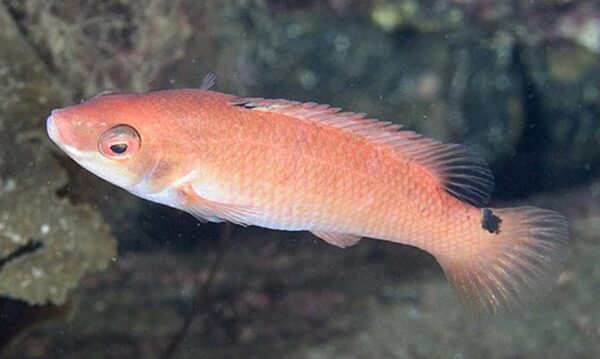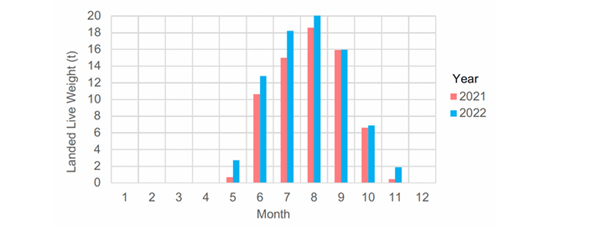Landings of wrasse species from the wild have been rapidly increasing, due to their usefulness as cleaner fish in salmon aquaculture facilities.
Image: Goldsinny wrasse – Ctenolabrus rupestris. Credit seawater.no
In May 2021, following calls from the Sustainable Inshore Fisheries Trust (SIFT) and other stakeholders to strengthen the voluntary wrasse fishery management measures, the Scottish Government closed the wrasse fishery to all licence holders unless they have been issued with a Letter of Derogation which imposed certain limited licence conditions, including:
- restrictions on minimum landing sizes;
- the timing of the fishing season;
- a requirement for wrasse fishers to provide more information directly to Marine Scotland (but not when landed directly onto aquaculture facilities).
However, a Total Allowable Catch (TAC) was not imposed, so the current management allows an unlimited number of wrasse (above a certain size) to be fished in any single fishing season. Recently published data on the wild wrasse fisheries reveals substantial landings (68 tonnes in 2021 and 78.6 tonnes in 2022). Using the average weight of wrasse landed this equates to around 746,000 fish landed in 2022 and around 3.64 million wrasse landed between 2017-2022. It is also likely that whilst ballan wrasse spawning probably ends around May or June, other targeted species such as corkwing, and goldsinny wrasse are summer breeders so still spawning when the fishery operates between May and November.
Total monthly landings (tonnes) reported for all wrasse species in 2021 and 2022 (Figure 2 from Scottish Government report (2024)
Elsewhere in the UK, fisheries managers such as the Devon and Severn Inshore Fisheries and Conservation Authority (whose wrasse fishery also supplies the Scottish salmon farming industry), have brought in effectively monitored and enforced mandatory measures to collect accurate data and implement evidence-based quotas, plus spatial management of where the fishery can take place and temporal restrictions on when it can take place.
A petition has been launched calling on the Scottish Parliament to urge the Scottish Government to develop and introduce a statutory Fisheries Management Plan focussed on protecting wild wrasse stocks in Scottish waters, beginning with a data-collection exercise and introduction of precautionary fishery management measures ahead of the next fishing season commencing in May 2025.
To read a briefing on wrasse and the Scottish aquaculture industry click here
To read the recently published report on the Scottish wild wrasse fishery click here
To access the Petition for consideration by The Scottish Parliament click here

